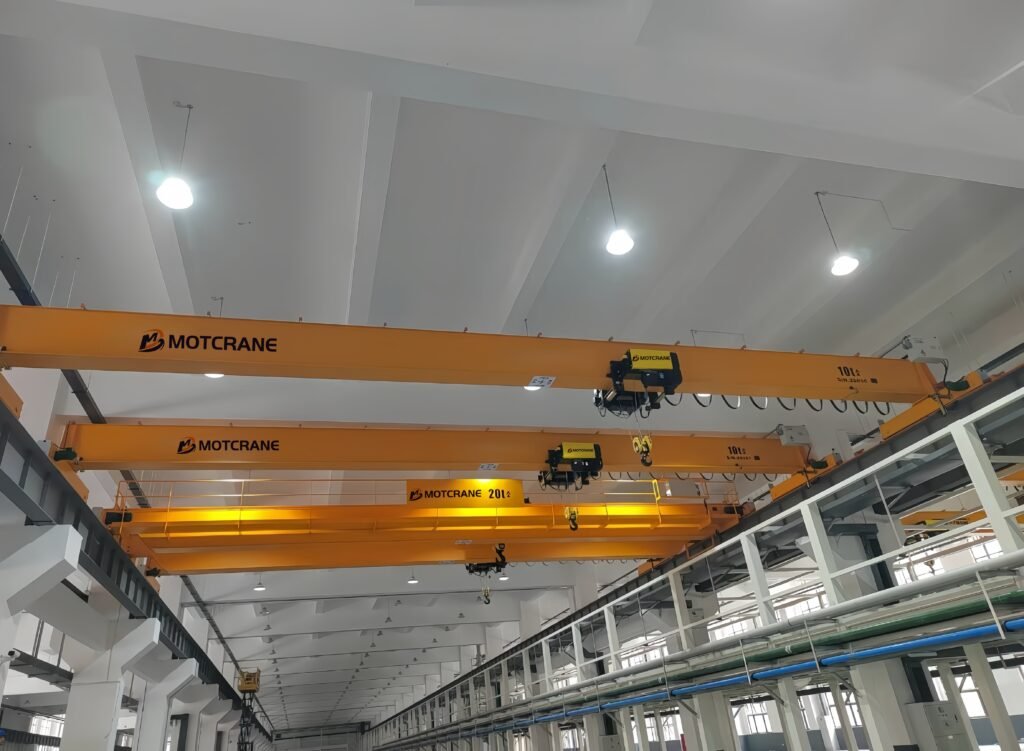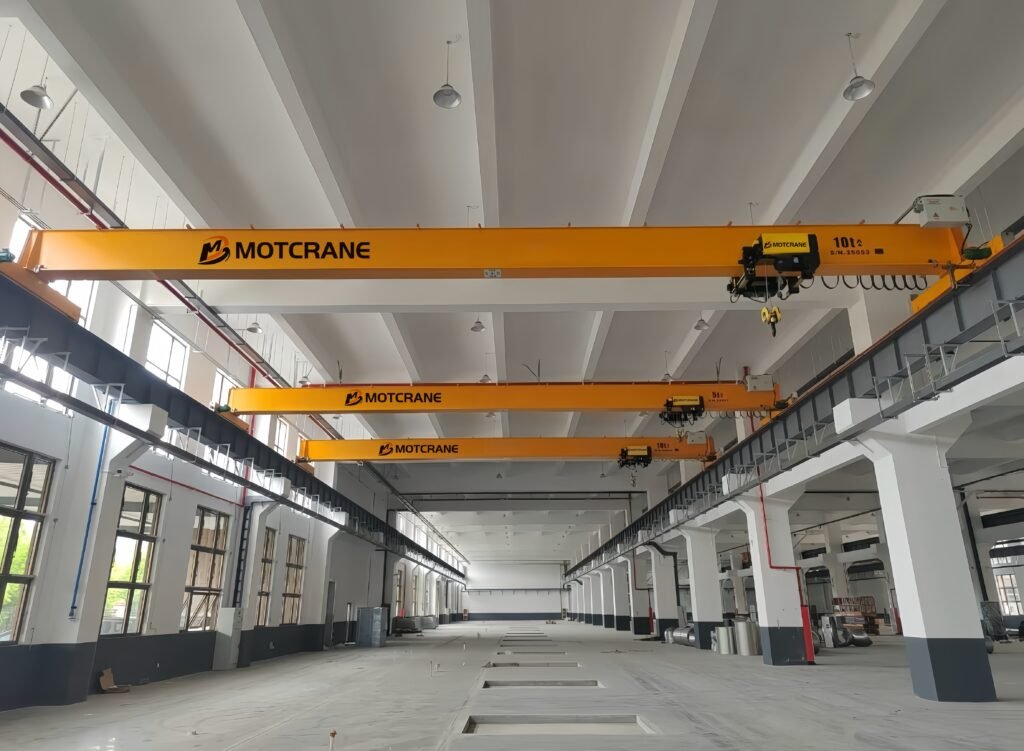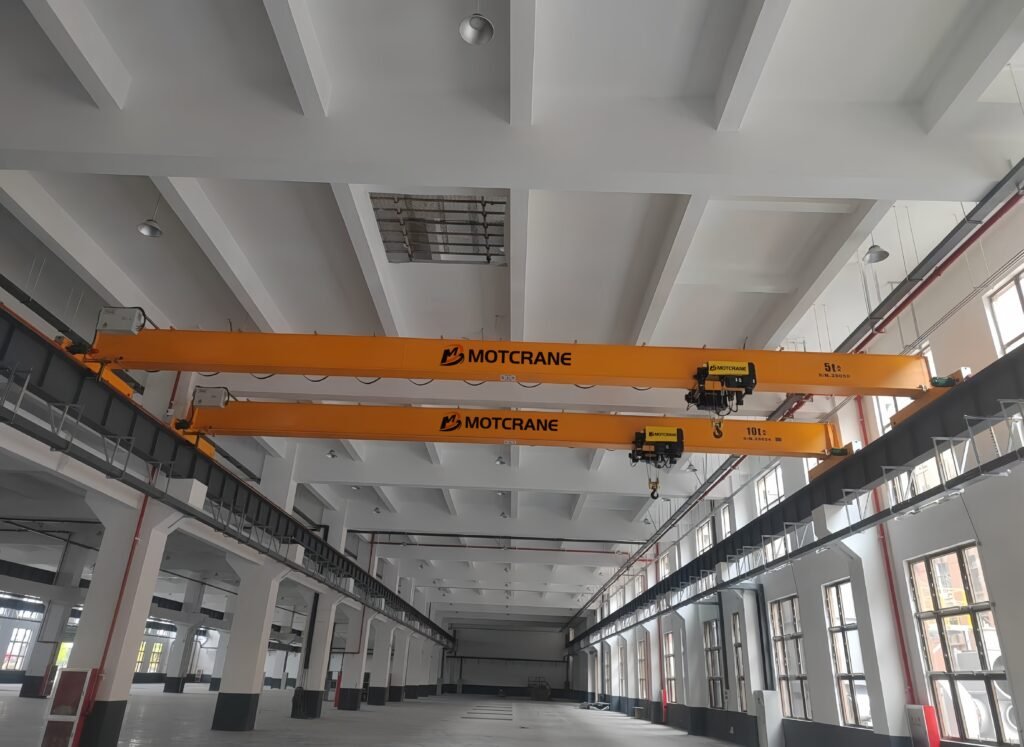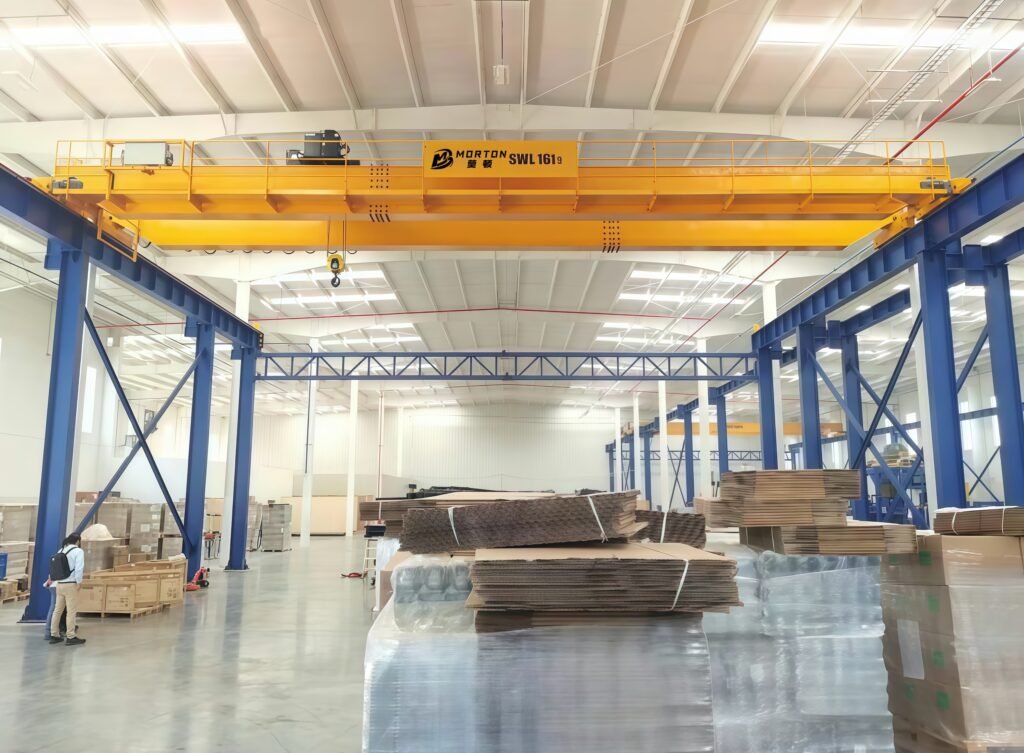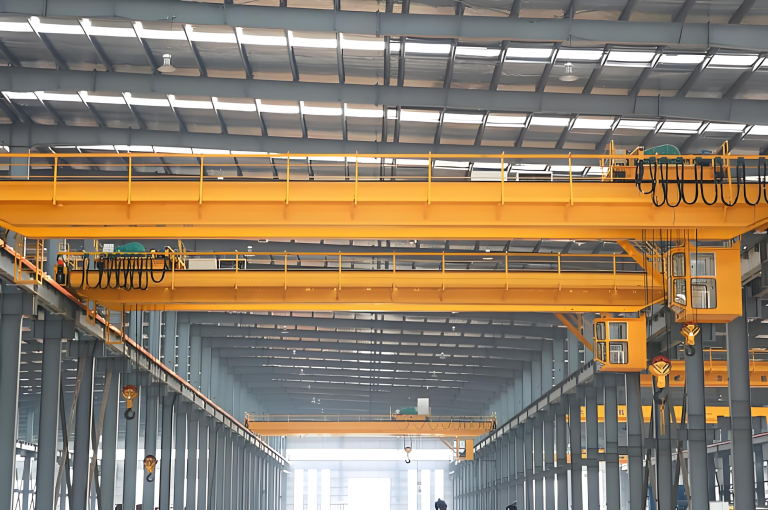Introduction
Single Girder vs Double Girder Overhead Crane — Which One Should You Choose?Choosing the right overhead crane system is one of the most critical decisions in material handling. Whether you’re upgrading an existing factory or setting up a new workshop, understanding the difference between single girder and double girder overhead cranes can directly affect your project’s efficiency, installation cost, and long-term reliability.
In this guide, we’ll explain the key technical and economic differences between these two popular types of overhead cranes — and help you decide which one best fits your lifting needs.
What Is a Single Girder Overhead Crane?
A single girder overhead crane uses one main beam (girder) that supports the hoist and trolley. The trolley typically runs on the bottom flange of the beam (under-running) or on top (top-running) depending on the design.
Key Features |
Common Applications |
|
|
Example: A 5-ton single girder EOT crane is ideal for a machining or fabrication shop with limited ceiling height.
What Is a Double Girder Overhead Crane?
A double girder overhead crane has two parallel main girders that support the trolley and hoist. This design offers greater load-bearing capacity and enables higher lifting heights.
Key Features |
Common Applications |
|
|
Example: A 50-ton double girder bridge crane is commonly used for lifting heavy molds, turbines, or large metal structures.
Main Differences Between Single and Double Girder Cranes
| Feature | Single Girder | Double Girder |
| Structure | One main beam | Two main beams |
| Lifting Capacity | Up to ~20 tons | 3 tons to 500 tons |
| Span | Up to 25 m | Up to 35 m or more |
| Cost | Lower | Higher |
| Maintenance | Easier | More complex |
| Installation Height | Compact | Requires higher building clearance |
| Crab Type | Underhung | Always top-running |
Pros and Cons Summary
|
Advantages of Single Girder Cranes |
Advantages of Double Girder Cranes |
|
|
|
Limitations |
Limitations |
|
|
Which One Should You Choose?
Your choice depends on lifting capacity, workshop size, and budget.
♠ Small factory or warehouse:Single Girder Crane
♠ Medium to heavy industry:Double Girder Crane
♠ Limited building height:Single Girder Crane
♠ Heavy equipment production:Double Girder Crane
If your lifting needs are below 15–20 tons, a single girder overhead crane usually provides the best value.
However, for large-scale production, continuous shifts, or load capacities above 20 tons, a double girder design is a more durable long-term investment.
Cost Comparison (Typical Range)
| Crane Type | Estimated Cost (USD) | Notes |
| Single Girder 5T x 10m span | $7,000 – $12,000 | Light-duty workshop |
| Double Girder 10T x 20m span | $15,000 – $25,000 | Medium-duty |
| Double Girder 50T x 25m span | $40,000 – $60,000 | Heavy-duty application |
(These prices vary based on hoist brand, control system, and manufacturing country.)
Safety and Maintenance Tips
Regardless of the crane type, safety and maintenance are critical.
♠ Inspect wire ropes and limit switches regularly
♠ Lubricate wheels, bearings, and hoist gears
♠ Check runway alignment and end-stop buffers
♠ Train operators to follow local safety standards (e.g., OSHA, ISO, or EN regulations)
Conclusion
Both single and double girder overhead cranes have their own strengths.
If your goal is cost-efficiency and simplicity, choose a single girder.
If your goal is performance, durability, and lifting capacity, invest in a double girder.
Call to Action
Working in low headroom or tight spaces and need precision set-down for high-value equipment?
Send MOTCRANE the Inquiry. We’ll return two practical options (standard configuration vs. upgrade-ready) with budget ranges to match your project plan.

